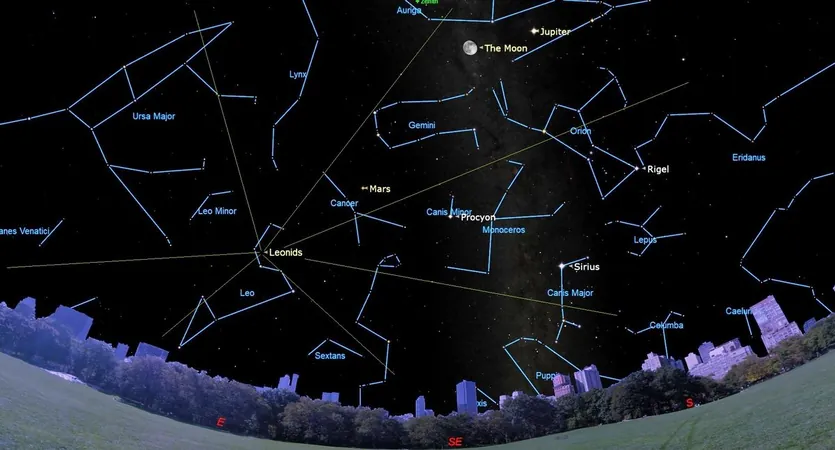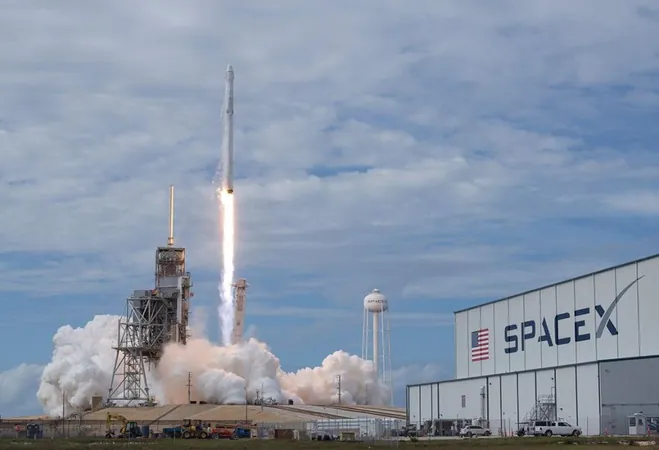
Will the Leonid Meteor Shower Dazzle Us? What to Expect in 2024!
2024-11-17
Author: Jacob
As the Leonid meteor shower peaks this year, excitement may be unfortunately tempered by the bright light of the full moon. The Leonids, which are renowned for their spectacular displays, might fall short this time around, with predictions suggesting only around 10 to 20 meteors per hour due to the lunar interference.
A Lackluster Showdown: Why You Might Not See Many Shooting Stars
The peak of the Leonids is anticipated to occur during the predawn hours of Sunday, November 17. However, with the moon reaching its full phase on November 15, it will cast plenty of light into the night sky, making the already weak shower hard to observe. This year's meteor display is more likely to resemble a light drizzle rather than a full-blown shower, leaving many stargazers disappointed.
Historically, the Leonids have produced incredible meteor storms, notably in 1833 and 1966, where rates exceeded 100,000 meteors per hour! More recent years such as 1999, 2001, and 2002 also saw impressive displays, but those experiences are becoming distant memories for eager enthusiasts.
Understanding the Leonid Meteor Dance
Named for their radiant point within the constellation Leo, the Leonids are remnants from the periodic Tempel-Tuttle comet, which passes through our solar system every 33.3 years, trailing dust and debris. Each time the comet swings by, a new stream of particles is released—potentially leading to a meteor storm if Earth intersects one of these trails.
Meteor expert Mikhail Maslov has predicted minimal activity for the Leonids this year. The expected visual display is quite underwhelming compared to unforgettable Leonid displays of the past.
Tips for Meteor Watching Amidst Challenges
Despite the less-than-promising forecast, there are ways to maximize your chances of spotting a meteor. The best time to look towards the constellation Leo is after midnight, when it becomes more visible in the southern sky. To enhance your stargazing experience, consider finding a location with minimal light pollution and an unobstructed view of the horizon.
The Leonids zoom into our atmosphere at extraordinary speeds of 45 miles (72 kilometers) per second, often creating bright, long-lasting trails—if you are fortunate enough to catch one this year. While the number of bright meteors may be few, a fireball could still surprise viewers, shining through even the glow of the full moon.
Looking Forward to Next Month's Geminids!
If this year's Leonids leave you wanting more, mark your calendars! The Geminids meteor shower on December 13-14 promises to be a more spectacular event. With potentially higher meteor counts and less moonlight interference, it offers us a second chance to experience the wonder of shooting stars.
For those eager to capture the magic of the cosmos, don't miss our guide on photographing meteors, and be sure to stay updated with our regularly refreshed night sky guide to enhance your stargazing adventures!









 Brasil (PT)
Brasil (PT)
 Canada (EN)
Canada (EN)
 Chile (ES)
Chile (ES)
 España (ES)
España (ES)
 France (FR)
France (FR)
 Hong Kong (EN)
Hong Kong (EN)
 Italia (IT)
Italia (IT)
 日本 (JA)
日本 (JA)
 Magyarország (HU)
Magyarország (HU)
 Norge (NO)
Norge (NO)
 Polska (PL)
Polska (PL)
 Schweiz (DE)
Schweiz (DE)
 Singapore (EN)
Singapore (EN)
 Sverige (SV)
Sverige (SV)
 Suomi (FI)
Suomi (FI)
 Türkiye (TR)
Türkiye (TR)